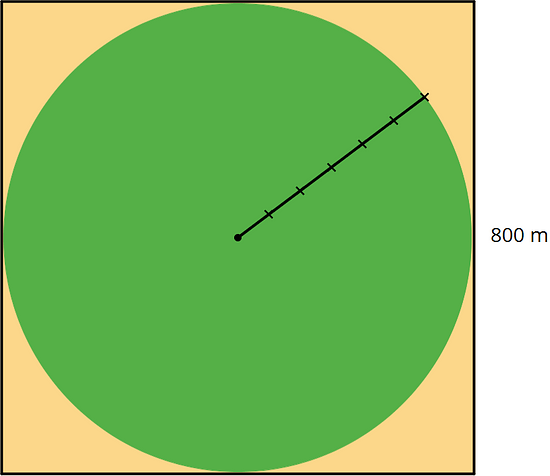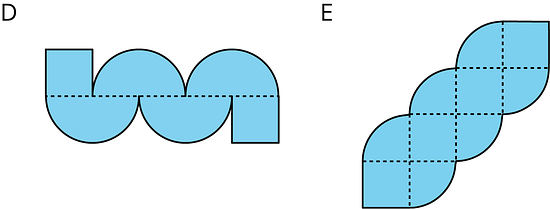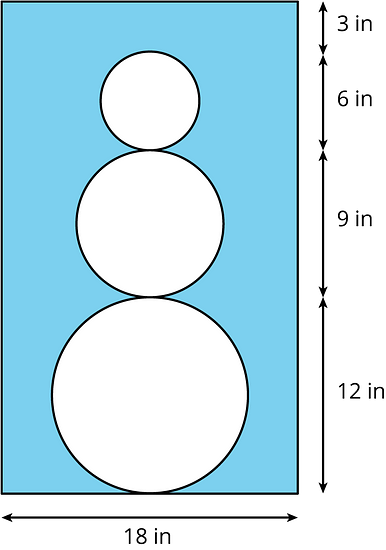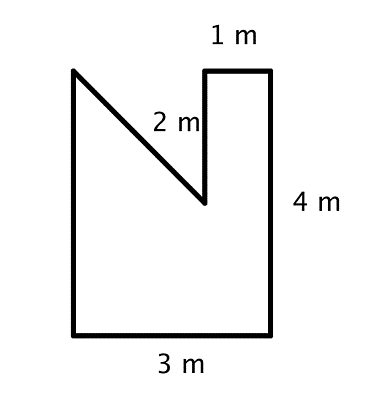Lección 9Pongamos en práctica el área de los círculos
Hallemos áreas de figuras formadas por círculos.
Metas de aprendizaje:
- Puedo calcular el área de figuras más complicadas que incluyen fracciones de círculos.
- Puedo escribir respuestas exactas en términos de .
9.1 Sigamos regando el campo
El área de este campo es aproximadamente 500,000 m2. ¿Cuál es el área del campo aproximada al metro cuadrado más cercano? Supón que la longitud de los lados del cuadrado es exactamente 800 m.

- 502,400 m2
- 502,640 m2
- 502,655 m2
- 502,656 m2
- 502,857 m2
9.2 Comparemos áreas formadas por círculos
- Cada cuadrado tiene lados de 12 unidades de longitud. Compara las áreas de las regiones sombreadas de las 3 figuras. ¿Qué figura tiene la región sombreada más grande? Explica o muestra tu razonamiento.

- Cada cuadrado de las figuras D y E tiene lados de 1 unidad de longitud. Compara el área de las dos figuras. ¿Cuál figura tiene más área?, ¿cuánta más? Explica o muestra tu razonamiento.

¿Estás listo para más?
¿Cuál figura tiene un perímetro más largo, la figura D o la figura E? ¿Cuánto más largo?
9.3 Volvamos a la pista de carreras
El campo que hay dentro de una pista de carreras está formado por un rectángulo de 84.39 m de longitud y 73 m de ancho junto con dos mitades de círculo en cada extremo. Los carriles donde se corre tienen 9.76 m de ancho por todo el rededor.

Resumen de la lección 9
La relación que hay entre , el área de un círculo, y , su radio, es . Podemos utilizar esta relación para hallar el área de un círculo si conocemos el radio. Por ejemplo, si un círculo tiene un radio de 10 cm, entonces el área es o cm2. También podemos utilizar la fórmula para hallar el radio de un círculo si conocemos el área. Por ejemplo, si un círculo tiene un área de m2, entonces su radio es 7 m y su diámetro es 14 m.
Algunas veces, en lugar de dejar a en las expresiones que representan el área, puede ser útil usar una aproximación numérica. Para los ejemplos anteriores, un círculo de radio 10 cm tiene un área de aproximadamente 314 cm2. De forma similar, un círculo que tiene un área de 154 m2 tiene un radio de aproximadamente 7 m.
También podemos encontrar el área de una fracción de un círculo. Por ejemplo, esta figura muestra un círculo dividido en 3 pedazos que tienen la misma área. La parte sombreada tienen un área de .

Problemas de práctica de la lección 9
Un círculo que tiene un diámetro de 12 pulgadas se dobla por la mitad y luego se dobla por la mitad otra vez. ¿Cuál es el área de la figura que resulta?
Halla el área de la región sombreada. Expresa tu respuesta en términos de .

La cara circular de un reloj tiene una circunferencia de 63 in. ¿Cuál es el área de la cara del reloj?
¿Cuáles de estas parejas de cantidades son proporcionales entres sí? Para las cantidades que son proporcionales, ¿cuál es la constante de proporcionalidad?
- El radio y el diámetro de un círculo
- El radio y la circunferencia de un círculo
- El radio y el área de un círculo
- El diámetro y la circunferencia de un círculo
- El diámetro y el área de un círculo
Halla el área de esta figura de dos maneras diferentes.

Tanto Elena como Jada leen a una tasa constante, pero Elena lee más despacio que Jada. Por cada 4 páginas que Elena lee, Jada puede leer 5.
- Completa la tabla.
páginas que leyó Elena (e) páginas que leyó Jada (j) 4 5 1 9 15 - Esta es una ecuación para la tabla: . ¿Qué significa el 1.25?
- Si llamamos al número de páginas que Elena lee, escribe una ecuación para esta relación que empiece con
- Completa la tabla.